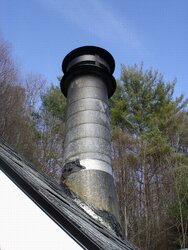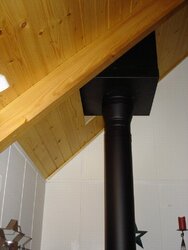Can anyone tell me what kind of chiminey this is? And if so, how I might be able to extend it. I am burning a jotul f400 castine and am not getting the optimal performance. I have tried just about everything to try and get longer and hotter burns. The only thing left to change would be the draft. I am using a 6" double wall stove pipe that is appx 7 ft long and tying into my existing 8" chiminey that runs an additional 6 ft. Total, I have about 13 ft of pipe going straight up from the stove. The manual said that I need at least 14 ft of pipe to optimize performance. Any ideas on how I might be able to extend what I have without having to replace the whole thing would be greatly appreciated.
what type of chiminey is this?? for castine w/ pics
- Thread starter ejwoodward
- Start date
-
Active since 1995, Hearth.com is THE place on the internet for free information and advice about wood stoves, pellet stoves and other energy saving equipment.
We strive to provide opinions, articles, discussions and history related to Hearth Products and in a more general sense, energy issues.
We promote the EFFICIENT, RESPONSIBLE, CLEAN and SAFE use of all fuels, whether renewable or fossil.



